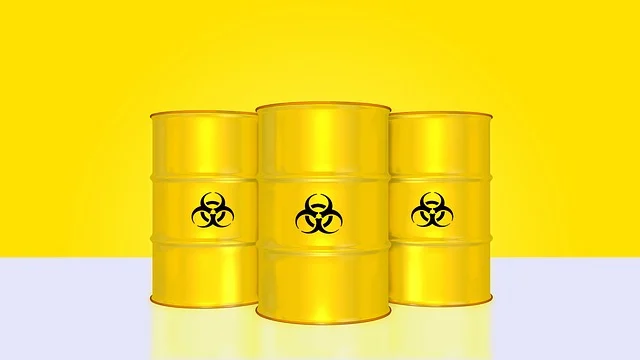There are approximately 8.8 calories in a gram of uranium.
The Question, “How many calories in a gram of uranium”may seem unusual, as we typically associate calories with food and energy consumption.
However, It’s crucial to know calories to measure energy, while uranium is a very radioactive element.
In our blog post, we’ll break down the concept of calories, the role of uranium in energy production, and whether or not it can be quantified in terms of calories.
While the answer may be complex, driving into this topic will provide valuable insights to the nature of uranium and its potential energy capabilities.
Understanding Calories and Energy

Understanding calories and energy is essential for grasping the concept of nutritional value and metabolic processes.
In the context of food, a calorie represents a unit of energy that fuels our bodies. It’s the energy released when we consume nutrients like carbohydrates, proteins, and fats.
However, the notion of calories becomes irrelevant when discussing uranium, a radioactive element vital for nuclear reactions.
Uranium’s energy is harnessed through nuclear processes, distinctly separate from the energy we gain from consuming food.
Recognizing this distinction is crucial to dispel the misconception of calories in uranium and to appreciate the diverse ways energy manifests in our world.
How Many Calories in A Gram of Uranium?
Calories are units of energy and are typically associated with the nutritional content of food. However, in the context of uranium, calories refer to the amount of energy released through nuclear fission or fusion processes.
The radioactivity of uranium poses serious health risks, and it is not safe or advisable to consume or come into direct contact with it.
Therefore, it is important to focus on obtaining calories from nutritional sources such as food and beverages rather than considering the calorie content of uranium.
Still, to take the calories from uranium, you must learn, “How many calories in a gram of uranium?”
A gram of uranium includes approximately 8.8 calories, and it’s not entirely safe for the human body.
Why Consuming Calories from Uranium Unsafe?

Consuming uranium can have severe and potentially life-threatening consequences due to its radioactive and toxic properties.
Here are some of the immediate and long-term consequences of consuming uranium to get calories.
Radiation Poisoning: Uranium is radioactive and emits ionizing radiation, which can damage or kill cells in the body. Ingesting or inhaling uranium can lead to radiation poisoning, causing symptoms like,
- nausea,
- vomiting,
- diarrhea,
- fever,
- fatigue, and in severe cases, even death.
Cellular Damage: Ionizing radiation from uranium can damage DNA and other cellular structures. This damage can lead to genetic mutations, increased risk of cancer, and long-term health problems.
- DNA Alterations: Cellular damage caused by uranium radiation results in DNA mutations and breaks.
- Impaired Replication: Altered DNA replication affects cell division and function.
- Disrupted Signaling: Cellular signaling pathways regulating metabolism are compromised.
- Energy Depletion: These disruptions lead to reduced energy production and utilization, rendering uranium-exposed cells less efficient in processing calories.
Kidney Damage: Kidney damage renders calories from uranium unsafe due to the organ’s vital role in metabolism and waste elimination.
When exposed to uranium, the kidneys filter and concentrate the radioactive element, causing cellular damage and impairing their function.
This disruption hinders the regulation of electrolytes, fluids, and waste products, jeopardizing the body’s overall metabolic balance.
Additionally, compromised kidney function can lead to hormonal imbalances and inflammation, further undermining the body’s ability to process and utilize calories effectively.
Therefore, uranium-induced kidney damage contributes to systemic metabolic dysfunction, making calories from uranium consumption unsafe for human health.
Bone Effects: Uranium can accumulate in bones, potentially leading to bone cancer and other bone-related diseases.
Neurological Effects: Uranium exposure may have neurological effects, including cognitive impairment and nervous system disorders.
Cancer Risk: Long-term exposure to uranium increases the risk of various types of diseases, like cancer, including lung, bone, and kidney cancer.
Reproductive and Developmental Effects: Uranium exposure can impact reproductive health and fetal development, potentially leading to birth defects and reproductive abnormalities.
- Genetic Mutations: Uranium exposure can cause DNA damage, leading to genetic mutations in reproductive cells.
- Hormonal Disruption: Uranium’s radioactive properties can disrupt the endocrine system, affecting hormone production and regulation.
- Embryonic Development: During pregnancy, uranium exposure can harm developing embryos, causing birth defects and developmental disorders due to the interference with cellular processes crucial for normal growth.
- Long-Term Impact: Uranium’s impact on reproductive and developmental processes can have long-lasting effects on future generations, highlighting the importance of minimizing exposure to ensure healthy reproduction and development.
Environmental Impact: Consuming uranium can also have environmental consequences, as the substance is often associated with environmental pollution and contamination of soil, water, and air.
- Environmental impact introduces toxins like pesticides and pollutants into ecosystems, potentially affecting organisms at various trophic levels.
- Disrupted Endocrine System can disrupt endocrine pathways, leading to reproductive hormone imbalances and impacting fertility and reproductive success.
- Developing organisms are particularly susceptible to environmental stressors, which can lead to developmental abnormalities and compromised growth.
- Environmental effects on reproductive health and development can have cascading impacts, influencing the health and viability of future generations within affected populations.
Legal and Ethical Consequences: In many jurisdictions, uranium consumption is illegal due to its radioactive and toxic nature. Indeed, Engaging in such types of activities can result in legal repercussions and penalties.
It is crucial to emphasize that consuming uranium is extremely dangerous and should never be attempted. The consequences can be catastrophic for human health and the environment.
If you suspect any exposure to radioactive materials, seek immediate medical attention and adhere to proper safety protocols.
FAQs
Is uranium safe to consume?
No, uranium is highly toxic and radioactive. It can cause severe health issues if ingested, inhaled, or absorbed through the skin. It is not safe for consumption in any form.
Can uranium be used as a source of energy in the human body?
No, uranium cannot be utilized as an energy source in the human body. The body obtains energy from food through various metabolic processes, and uranium does not play a role in these processes.
Does uranium have any nutritional value?
No, Uranium does not have any nutritional value. It is not a nutrient and does not provide any essential vitamins, minerals, or other beneficial substances required for human health.
Is there any safe level of exposure to uranium?
No, there is no completely safe level of exposure to uranium, as even low levels of radiation can pose potential health risks over time.
Can you cook or prepare food using uranium?
No, using uranium in cooking or food preparation is highly dangerous and not recommended. Uranium is not a suitable or safe material for food-related activities.
Can uranium be found naturally in food or water sources?
Yes, uranium can be found naturally in small amounts in food and water sources due to its presence in soil and rock formations.
What are the potential health risks associated with uranium exposure?
Exposure to uranium, particularly through inhalation or ingestion, can lead to various health issues. The health issues include kidney damage, increased cancer risk, and damage to the reproductive system.
Precautions should always be taken to minimize exposure to uranium and other radioactive materials.
How is uranium handled and stored safely?
Uranium must be handled and stored in accordance with strict safety protocols to prevent accidents or the release of radioactive materials.
It is typically stored in specially designed containers and facilities that provide proper shielding and containment to protect individuals and the environment.
Conclusion
Understanding the concept of calories and the number of calories in a gram of uranium is crucial for various reasons.
Firstly, it lets us make informed choices about our diet and health.
Secondly, it emphasizes the potential dangers of consuming or being exposed to radioactive substances like uranium.
So, how many calories in a gram of uranium? Although it’s uncertain, approximately, you’ll get 8.8 calories in a gram of uranium.











